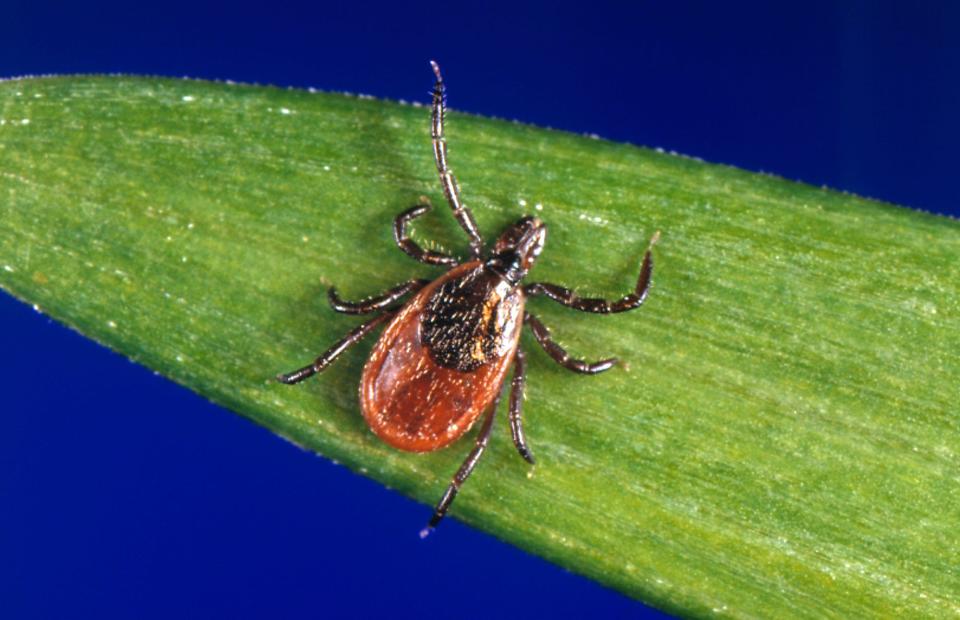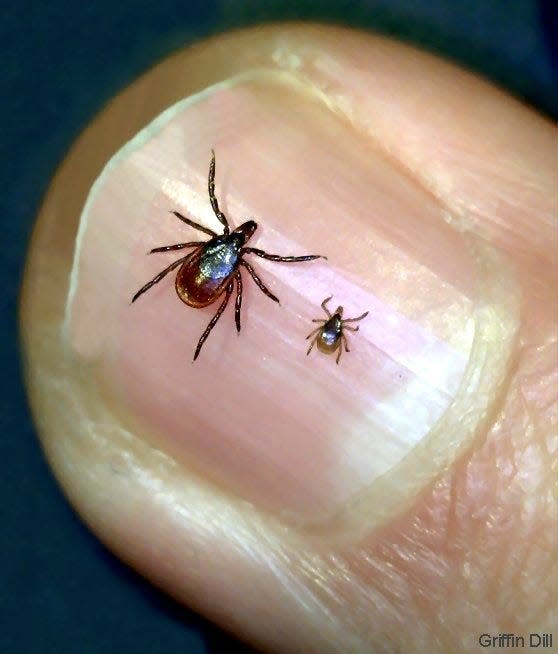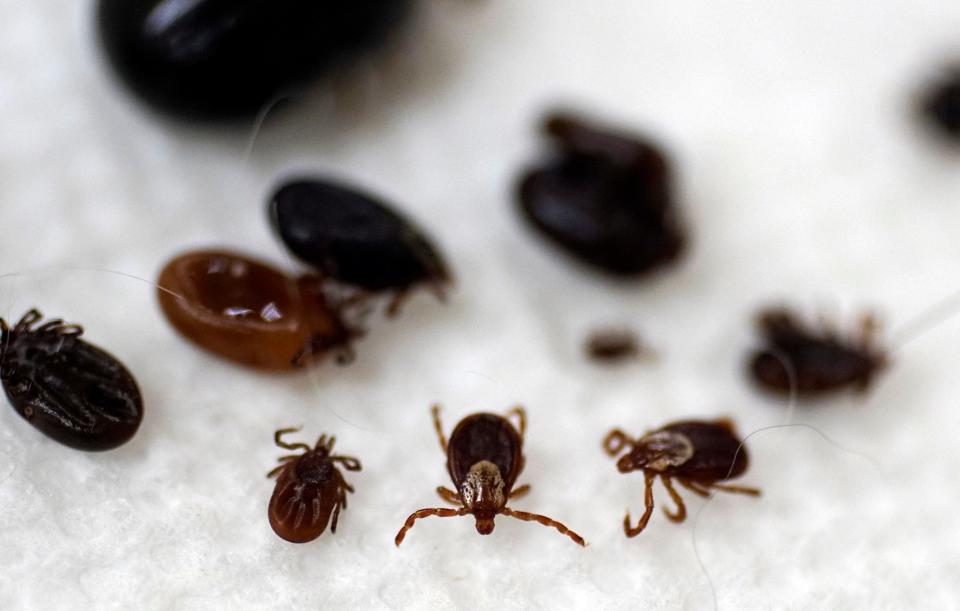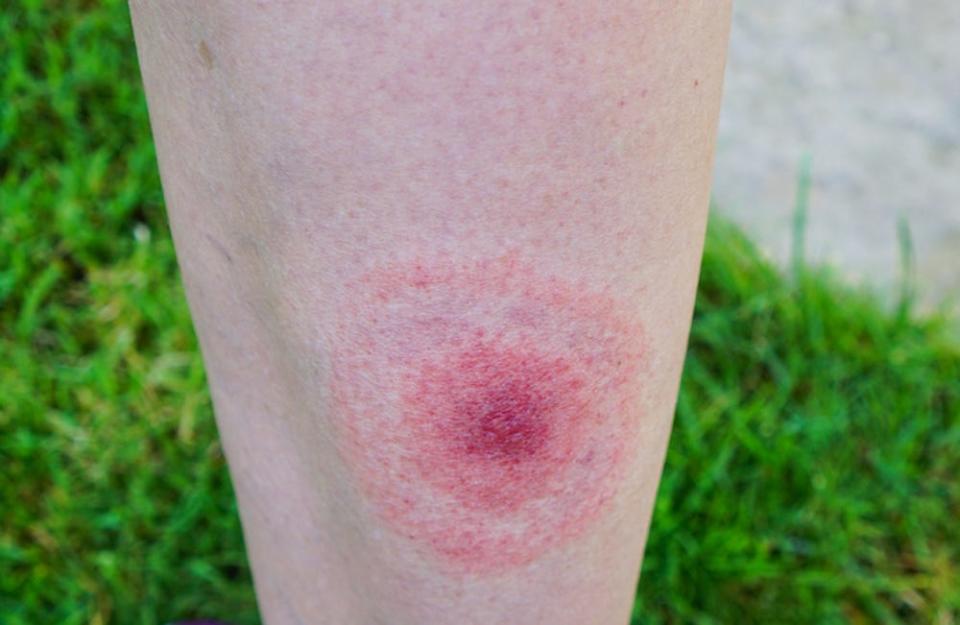It's tick season. Here's 3 things to know about Lyme disease and how to prevent it
Recently, I have received letters from folks warning about the dangers of tick bites. Several kinds of ticks are found in Kentucky, including the Lone Star Tick, American Dog Tick, and the tiny deer tick.
Tick bites can cause various symptoms, some quite serious. The letters emphasized key points, focusing on the Deer Tick and Lyme disease, a potentially long-term devastating disease. For example, even if you take precautions after a bite and visit a hospital emergency room or similar immediate care centers, Lyme disease may not be detected. In fact, in one note, the author had severe symptoms that sent him to the ER, but it was not until much later that the disease was diagnosed.
He writes: “It was only after a personal friend (a retired Ear, Nose and Throat doctor) recommended a 'tick panel' that it was determined I had Lyme disease. Most of us have heard of Lyme disease but know little of the disease or its potential deleterious effects. Please educate the public.”
Several years ago, it was believed that you can’t catch Lyme disease in Kentucky because it was thought to be restricted to the upper Midwest, northeastern and mid-Atlantic states. At the time, a friend was camping near Louisville without a tent and when he awoke in the morning he was covered with ticks. He did his best to get them off his body and then didn’t think anymore about it until symptoms appeared (discussed below).

You may like: What is visceral body fat? Here's what to know and how you can measure it
Despite the symptoms that increased in severity, his doctor did not diagnose Lyme disease, which allowed the disease to take hold and debilitate him for several years. Let me add, this was a highly fit individual who had lived a very active lifestyle but could no longer participate due to overwhelming chronic fatigue.
I wrote about his case in my column, trying to alert the public that a tick bite could be much more serious than you realize. In response, a physician sent me a note, assuring me that Lyme disease does not exist in Kentucky. However, soon after, more cases surfaced that could not be ignored, and it was acknowledged that although Lyme disease is more prevalent elsewhere, it had indeed come to Kentucky, and we better step up to the plate.
How can you avoid tick bites?

Typically, humans contract Lyme disease from the bite of a deer tick carrying a specific bacteria (the Borrelia family of bacteria). Since ticks thrive in grassy, bushy, or wooded areas, be aware of the risk of walking or hiking in such areas. Cover up your skin completely, especially your neck, arms, and legs, and use a strong insect repellent. But despite these measures, check your body carefully for ticks as they can easily get under clothing and bite without any indication or pain.
Also, the deer tick is quite tiny, a mere speck, and easily overlooked.
What are some symptoms of Lyme disease?

Not all tick bites cause Lyme disease, and when bitten by a tick you may experience a tiny bump that itches, similar to a mosquito bite. A big problem is that symptoms of Lyme disease can vary, and worse, some folks won’t have symptoms early on. The most common symptom associated with Lyme disease is a rash that can appear soon after the bite, or perhaps be delayed for up to 30 days. Usually, the rash appears as a circle that spreads slowly outward from the tick bite. It’s often painless, and when combined with a delay in appearance, this often causes the victim to ignore what is happening.
When should you take action and see a doctor? Because "a stitch in time saves nine," I’m always on the side of overkill on caution. Unfortunately, most folks won’t take the situation seriously, plus many of the symptoms of Lyme disease could arise from something else. Regardless, smart money says always assume the worst-case scenario and see a doctor immediately.
You may like: Want to lose belly fat? Here's 3 exercise, diet changes to start doing
Fortunately, most cases of Lyme disease can be cured in two to four weeks with oral antibiotics. However, once the disease takes hold, patients can continue to have symptoms, especially pain and fatigue, for six months and longer after completing the antibiotic treatment. Thus, the key message is the earlier the diagnosis and earlier the treatment begins, the better the outcome.
What are the stages of tick bites?

If Lyme disease begins to take hold, more serious symptoms beyond a skin rash may appear and this is referred to as Stage 1. Personal reports from friends who have suffered the effects of Lyme disease emphasize extreme tiredness, but this can be blamed on other things. However, be alert if the tiredness is accompanied by other symptoms, such as a fever, headache, aches, and pains, or swollen lymph nodes.
Stage 2 often shows up three to 10 weeks after the tick bite. Now the disease begins to spread or "disseminate" with rashes appearing on the body far from the tick bite. Pain can appear in many forms, in the back, hips and legs, in the hands or feet, and even in the eyes. As things get worse, the heart can be impacted with irregular heartbeats, and there can even be an effect on eye nerves and the loss of vision.
You may like: Sit-up vs. planks: What's better for core strength? Here's what to know
The onset of Stage 3 can appear anywhere from two months to a full year later. Many of the symptoms from Stage 2 continue to linger, but now things get worse with severe arthritis, especially in the knees, causing swelling, stiffness and damage to tissues and joints. The skin also can be affected, by discoloring and swelling, but this may not show up until many years after the tick bite.
There is lots more that can be discussed about Lyme disease and the serious problems associated with other tick bites, but the main point is to take them all seriously as a threat and take action immediately.
Reach Bryant Stamford, a professor of kinesiology and integrative physiology at Hanover College, at stamford@hanover.edu.
This article originally appeared on Louisville Courier Journal: It's tick season. What to know about preventing Lyme disease

